Method of Geomechanical Parameter Determination and Volumetric Fracturing Factor Simulation under Highly Stochastic Geologic Conditions
Abstract
1. Introduction
2. Geomechanical Property Modeling Method Coupling Logging and Seismic Reflection Data
- (1)
- Establish a high-precision 3D structure model
- (2)
- Establish a 3D petrophysical model characterizing lithofacies and reservoir parameters
- (3)
- Establish a 3D geological model characterizing geomechanical parameters
3. Geomechanical Property Modeling for a Typical Reservoir
3.1. Overburden Pressure
3.2. Three-Dimensional Pore Pressure
3.3. Three-Dimensional Horizontal Principal Stress
3.4. Three-Dimensional Horizontal Stress Difference
3.5. Three-Dimensional Rock Geomechanical Parameters
4. Influence Factors on Volumetric Fracturing Performance
4.1. Numerical Simulation Model Coupled with Rock Geomechanics
4.2. Influence of Geological and Geomechanical Parameters on Volumetric Fracturing
- (1)
- Payzone thickness
- (2)
- Formation permeability
- (3)
- Interlayer thickness
- (4)
- Stress difference of the payzone and interlayer
- (5)
- Young’s modulus
- (6)
- Poisson’s ratio
4.3. Influence of Fracturing Parameters on Volumetric Fracturing
5. Pilot Well Design and Oil Production Performance
6. Conclusions
- (1)
- A workflow of a 3D fine geomechanical model was proposed, including a structure model, petrophysical model and geomechanical model. The geomechanical model parameters of a typical reservoir were comprehensively corrected through production history matching.
- (2)
- The sensitive factors affecting fracturing production in this area were evaluated numerically. The influence of formation parameters and operational parameters on volume fracturing was studied with oil production as the main index. The results show that for formation parameters, the payzone thickness of the reservoir is the main influencing factor; the interlayer thickness and stress difference between the reservoir and interlayer are the secondary influencing factors; and the formation permeability, Young’s modulus and Poisson’s ratio are the weak influencing factors.
- (3)
- A typical pilot test well was designed, fracturing parameters were optimized and the production before and after optimized fracturing was predicted and compared. The results show that optimized fracturing can increase the oil production rate by 7 tons/day relative to traditional fracturing. The oil production rate is 4 tons/day higher than that of conventional fracturing after 1 year of production, indicating encouraging incremental performance.
Author Contributions
Funding
Institutional Review Board Statement
Informed Consent Statement
Data Availability Statement
Conflicts of Interest
References
- Alexeyev, A.; Ostadhassan, M.; Mohammed, R.A.; Bubach, B.; Khatibi, S.; Li, C.; Kong, L. Well log based geomechanical and petrophysical analysis of the bakken formation. In Proceedings of the 51st US Rock Mechanics/Geomechanics Symposium, OnePetro, San Francisco, CA, USA, 25–28 June 2017. [Google Scholar]
- Eshkalak, M.O.; Mohaghegh, S.D.; Esmaili, S. Geomechanical properties of unconventional shale reservoirs. J. Pet. Eng. 2014, 2014, 1–10. [Google Scholar] [CrossRef]
- Zoccarato, C.; Baù, D.; Bottazzi, F.; Ferronato, M.; Gambolati, G.; Mantica, S.; Teatini, P. On the importance of the heterogeneity assumption in the characterization of reservoir geomechanical properties. Geophys. J. Int. 2018, 207, 47–58. [Google Scholar] [CrossRef]
- Mallet, C.; Isch, A.; Laurent, G.; Jodry, C.; Azaroual, M. Integrated static and dynamic geophysical and geomechanical data for characterization of transport properties. Int. J. Rock Mech. Min. Sci. 2022, 153, 105050. [Google Scholar] [CrossRef]
- Vishkai, M.; Wang, J.; Wong, R.C.; Clarkson, C.R.; Gates, I.D. Modeling geomechanical properties in the montney formation, Alberta, Canada. Int. J. Rock Mech. Min. Sci. 2017, 96, 94–105. [Google Scholar] [CrossRef]
- Germay, C.; Richard, T.; Mappanyompa, E.; Lindsay, C.; Kitching, D.; Khaksar, A. The continuous-scratch profile: A high-resolution strength log for geomechanical and petrophysical characterization of rocks. SPE Reserv. Eval. Eng. 2015, 18, 432–440. [Google Scholar] [CrossRef]
- Schön, J.H. Geomechanical properties. In Developments in Petroleum Science; Elsevier: Amsterdam, The Netherlands, 2015; Volume 65, pp. 269–300. [Google Scholar]
- Zhao, Z.; Kai, L.I.; Zhao, P.; Tao, L. Practice and development suggestions for volumetric fracturing technology for shale oil in the ordos basin. Pet. Drill. Tech. 2021, 49, 85–91. [Google Scholar]
- Chen, Y.; Zhang, D. Well log generation via ensemble long short-term memory (EnLSTM) network. Geophys. Res. Lett. 2020, 47, e2020GL087685. [Google Scholar] [CrossRef]
- Tahmeen, M.; Love, J.; Rashidi, B.; Hareland, G. Complete geomechanical property log from drilling data in unconventional horizontal wells. In Proceedings of the 51st US Rock Mechanics/Geomechanics Symposium, OnePetro, San Francisco, CA, USA, 25–28 June 2017. [Google Scholar]
- Carpenter, C. Surface drilling data can help optimize fracture treatment in real time. J. Pet. Technol. 2019, 71, 74–76. [Google Scholar] [CrossRef]
- Elkatatny, S.; Tariq, Z.; Mahmoud, M.; Mohamed, I.; Abdulraheem, A. Development of new mathematical model for compressional and shear sonic times from wireline log data using artificial intelligence neural networks (white box). Arab. J. Sci. Eng. 2018, 43, 6375–6389. [Google Scholar] [CrossRef]
- Parapuram, G.; Mokhtari, M.; Ben Hmida, J. An artificially intelligent technique to generate synthetic geomechanical well logs for the bakken formation. Energies 2018, 11, 680. [Google Scholar] [CrossRef]
- Parapuram, G.K.; Mokhtari, M.; Hmida, J.B. Prediction and analysis of geomechanical properties of the upper bakken shale utilizing artificial intelligence and data mining. In Proceedings of the SPE/AAPG/SEG Unconventional Resources Technology Conference, OnePetro, Austin, TX, USA, 24–26 July 2017. [Google Scholar]
- Akinnikawe, O.; Lyne, S.; Roberts, J. Synthetic well log generation using machine learning techniques. In Proceedings of the SPE/AAPG/SEG Unconventional Resources Technology Conference, OnePetro, Houston, TX, USA, 23–25 July 2018. [Google Scholar]
- Chen, Y.; Zhang, D. Physics-constrained deep learning of geomechanical logs. IEEE Trans. Geosci. Remote Sens. 2020, 58, 5932–5943. [Google Scholar] [CrossRef]
- Miah, M.I. Predictive models and feature ranking in reservoir geomechanics: A critical review and research guidelines. J. Nat. Gas Sci. Eng. 2020, 82, 103493. [Google Scholar] [CrossRef]
- Farquhar, R.A.; Somerville, J.M.; Smart, B.G.D. Porosity as a geomechanical indicator: An application of core and log data and rock mechanics. In Proceedings of the European Petroleum Conference, OnePetro, London, UK, 25–27 October 1994. [Google Scholar]
- Slatt, R.M.; Abousleiman, Y. Merging sequence stratigraphy and geomechanics for unconventional gas shales. Lead. Edge 2011, 30, 274–282. [Google Scholar] [CrossRef]
- Grana, D.; Schlanser, K.; Campbell-Stone, E. Petroelastic and geomechanical classification of lithologic facies in the Marcellus Shale. Interpretation 2015, 3, SA51–SA63. [Google Scholar] [CrossRef]
- Gray, D.; Anderson, P.; Logel, J.; Delbecq, F.; Schmidt, D.; Schmid, R. Estimation of stress and geomechanical properties using 3D seismic data. First Break 2012, 30, 59–68. [Google Scholar] [CrossRef]
- Hussain, M.; Ahmed, N. Reservoir geomechanics parameters estimation using well logs and seismic reflection data: Insight from Sinjhoro Field, Lower Indus Basin, Pakistan. Arab. J. Sci. Eng. 2018, 43, 3699–3715. [Google Scholar] [CrossRef]
- Matinkia, M.; Amraeiniya, A.; Behboud, M.M.; Mehrad, M.; Bajolvand, M.; Gandomgoun, M.H.; Gandomgoun, M. A novel approach to pore pressure modeling based on conventional well logs using convolutional neural network. J. Pet. Sci. Eng. 2022, 211, 110156. [Google Scholar] [CrossRef]
- Liu, Z.; Song, L.; Wang, C.; Sun, T.; Yang, X.; Xia, L.I. Evaluation method of the least horizontal principal stress by logging data in anisotropic fast formations. Pet. Explor. Dev. 2017, 44, 789–796. [Google Scholar] [CrossRef]
- Tan, W.H.; Ba, J.; Guo, M.Q.; Li, H.; Zhang, L.; Yu, T.; Chen, H. Brittleness characteristics of tight oil siltstones. Appl. Geophys. 2018, 15, 14. [Google Scholar] [CrossRef]
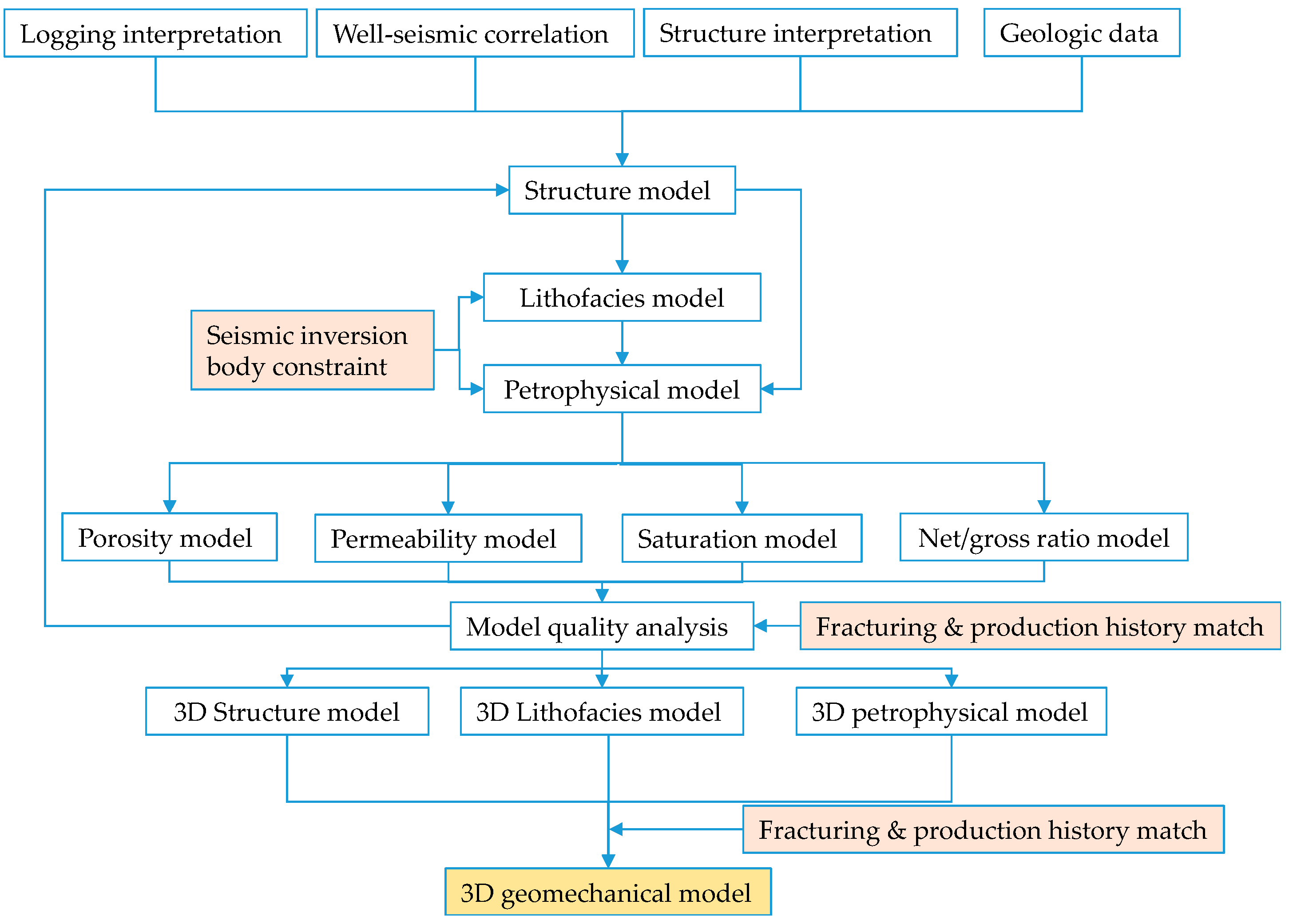
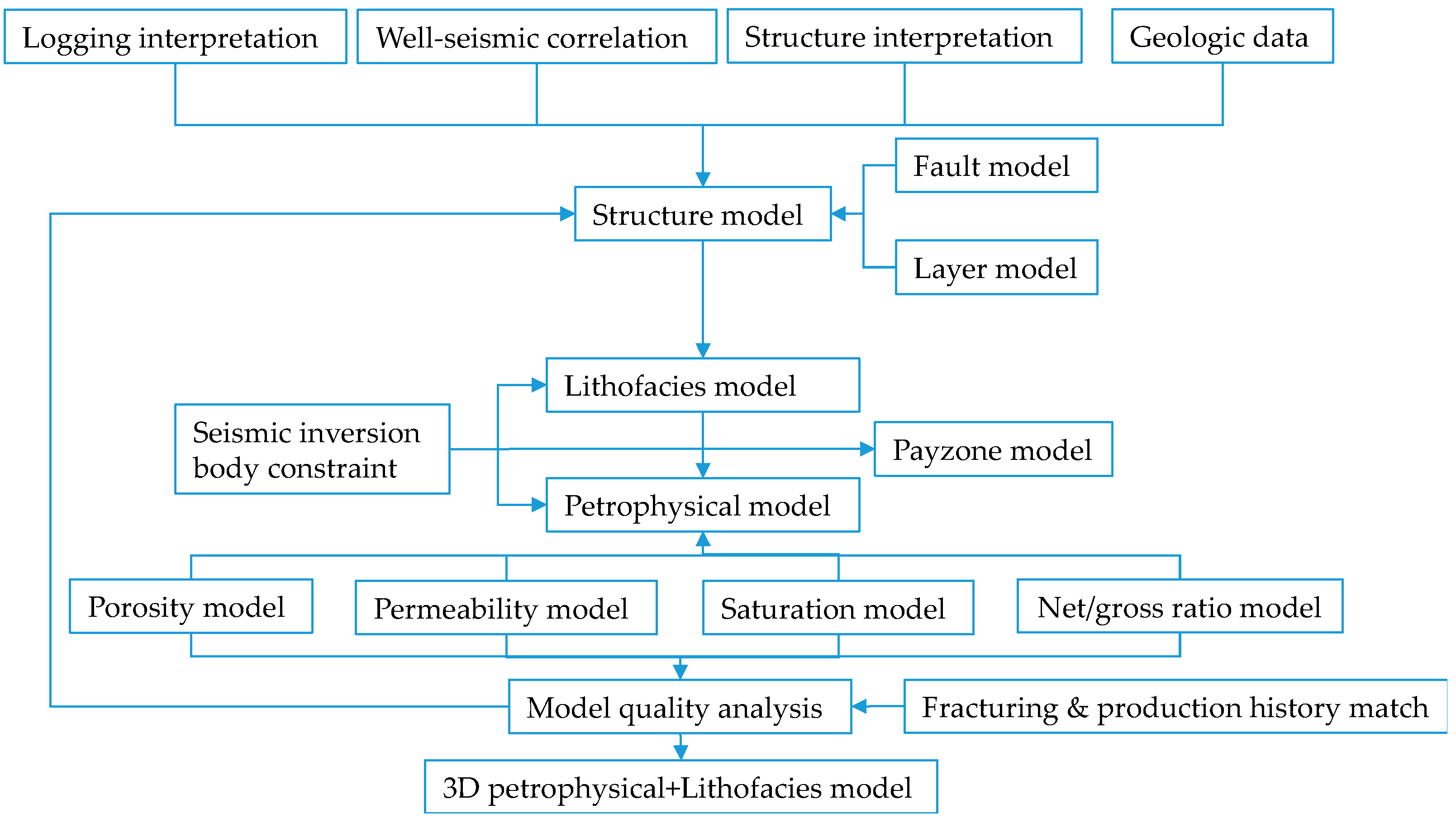
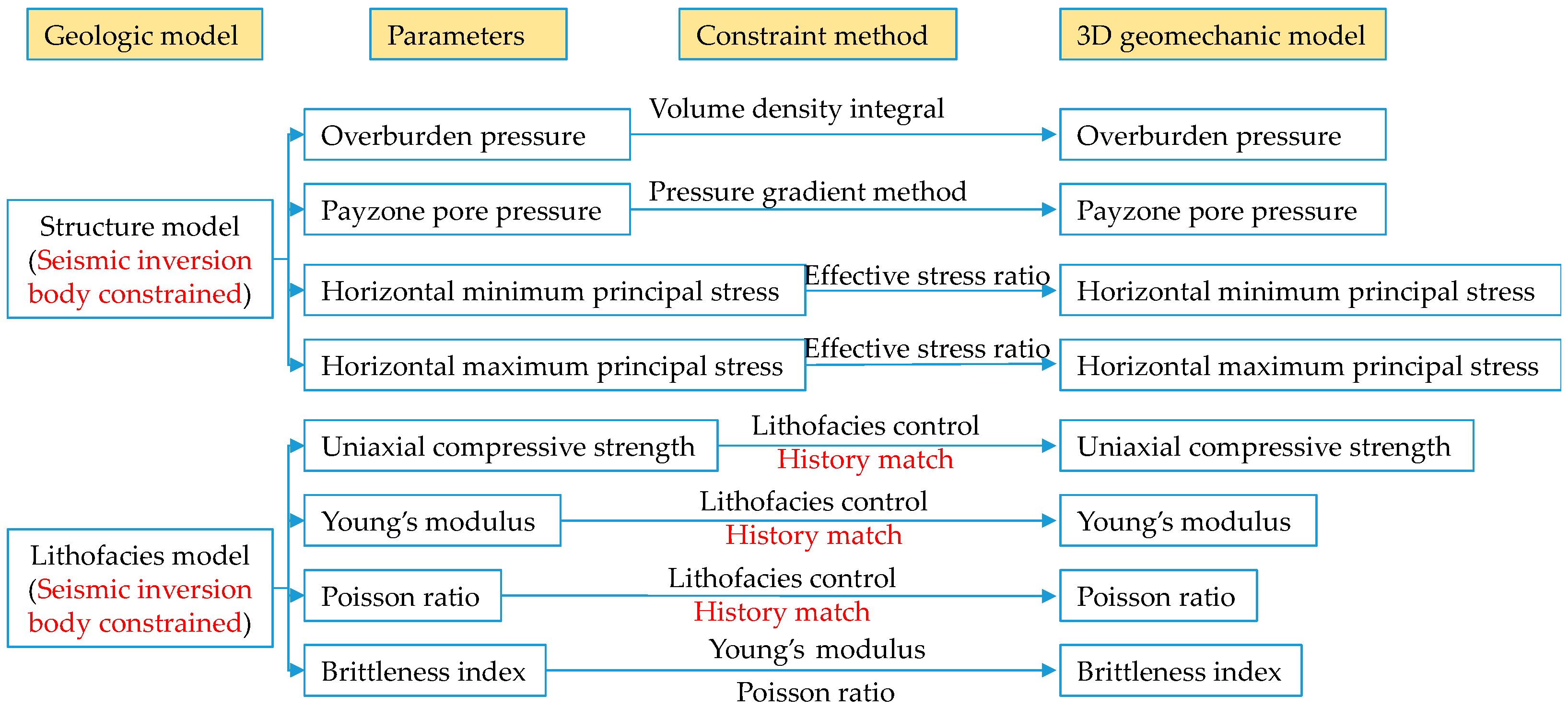

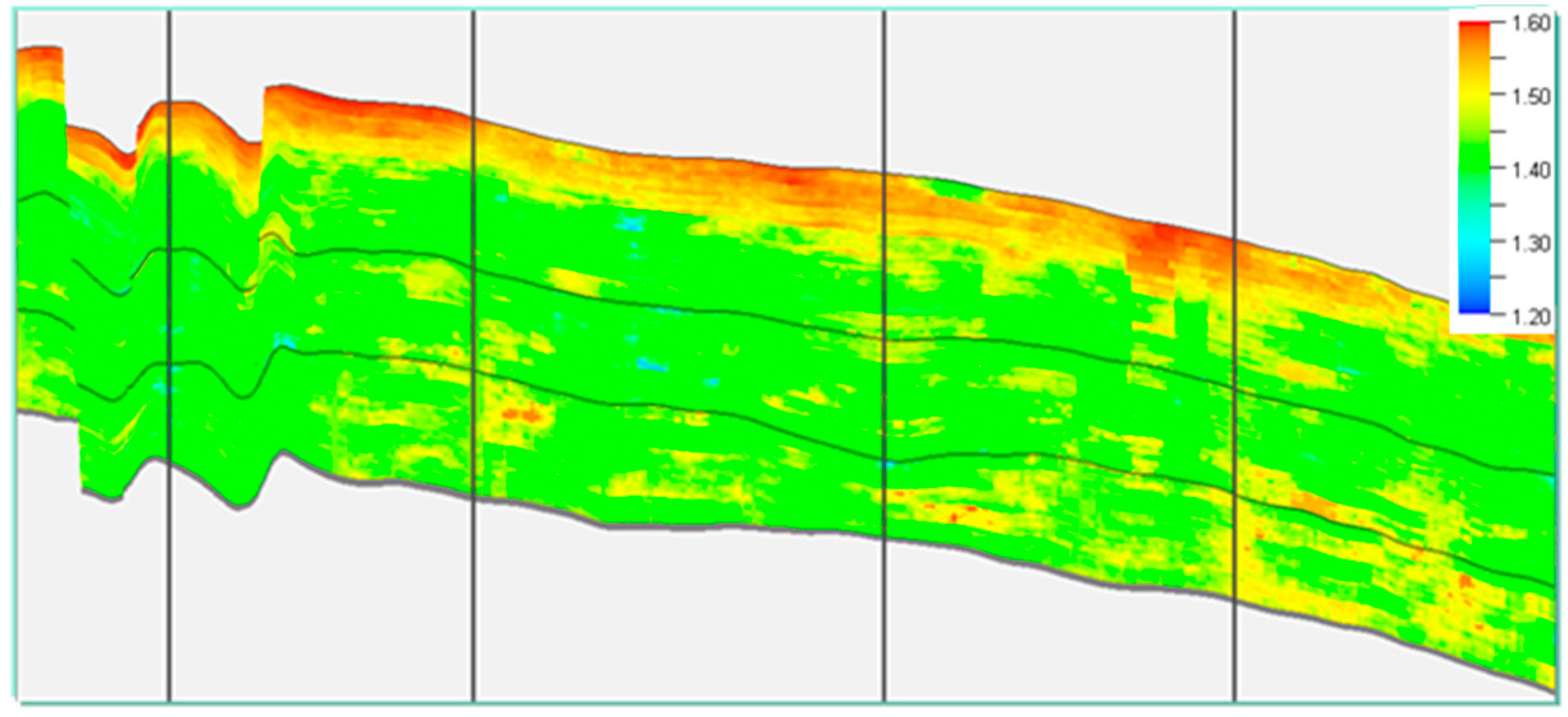

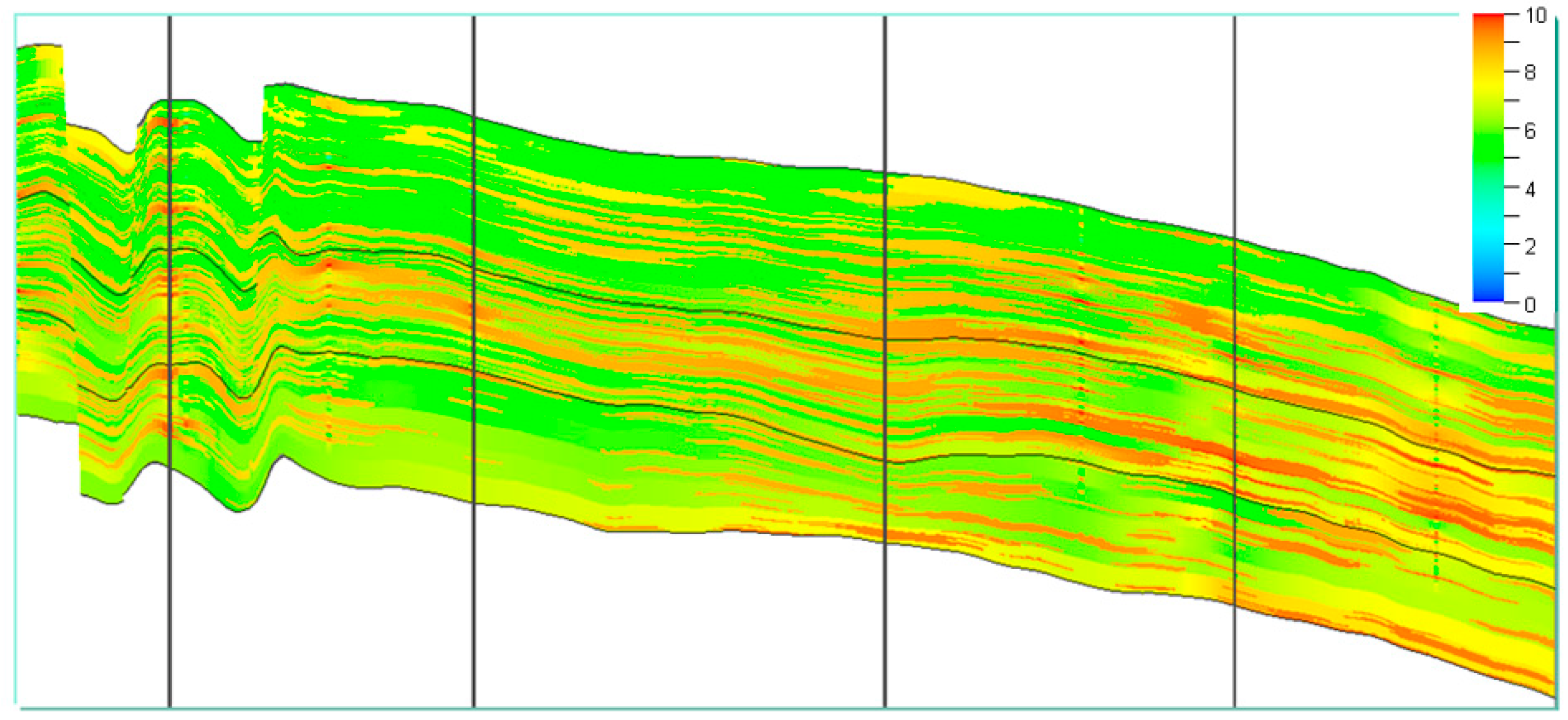

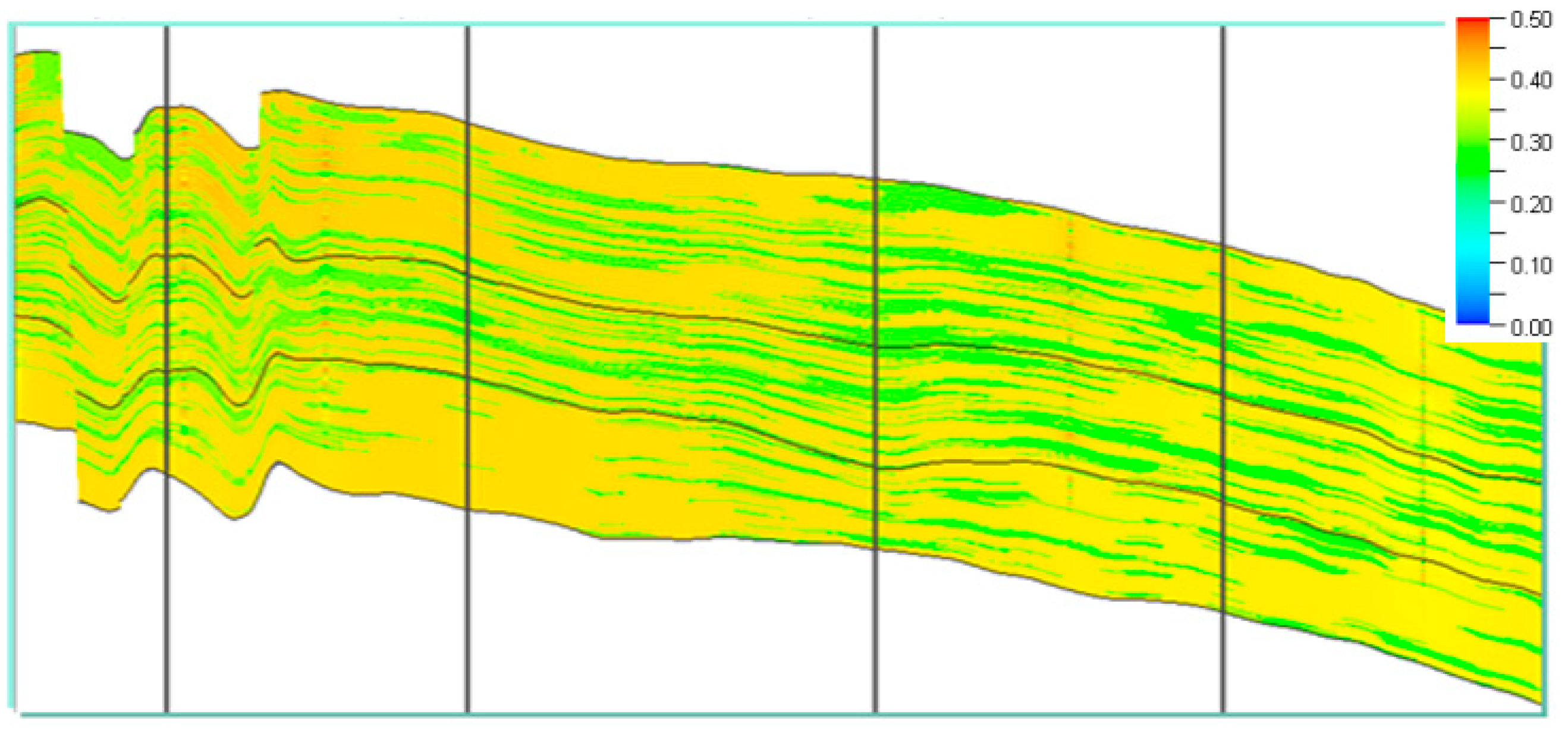
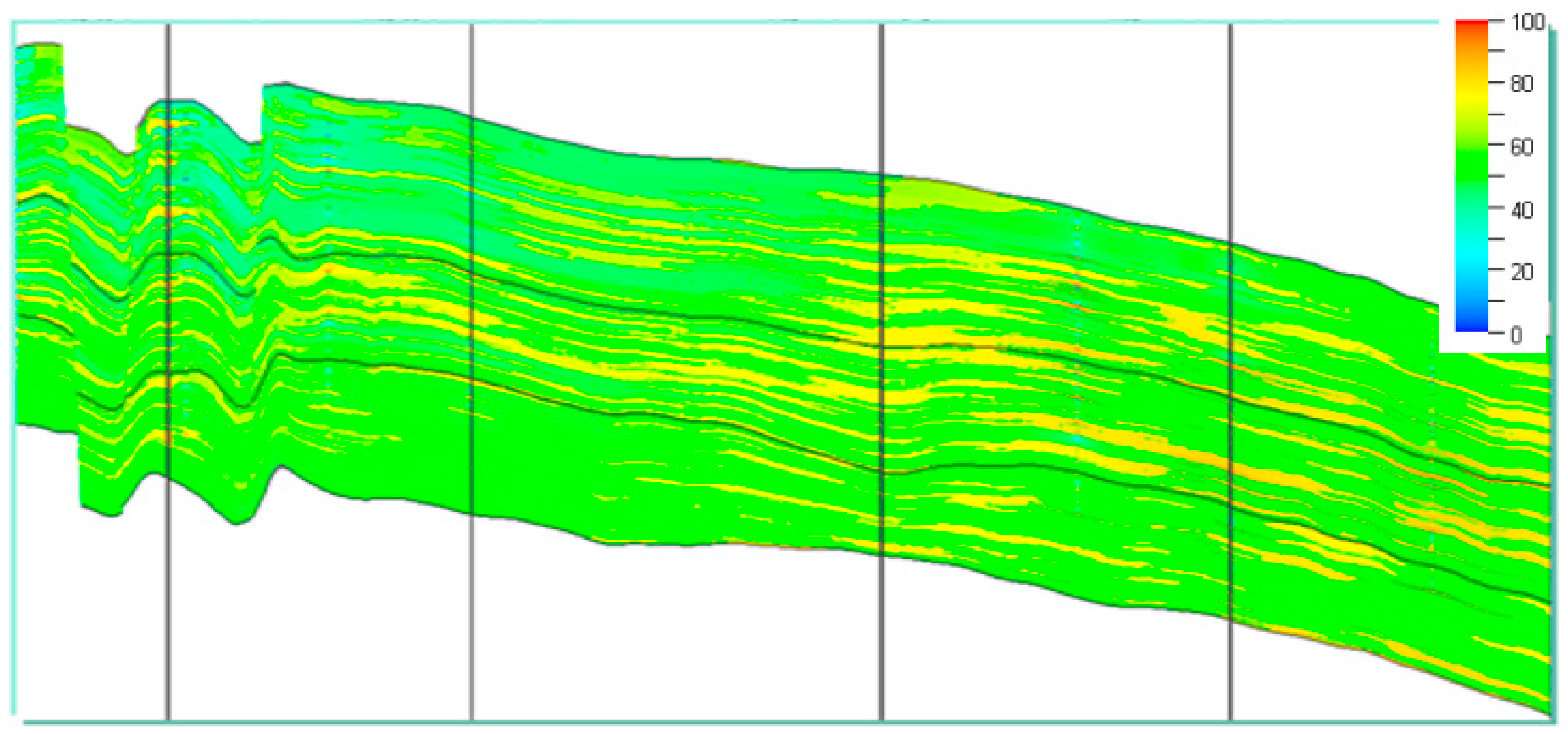
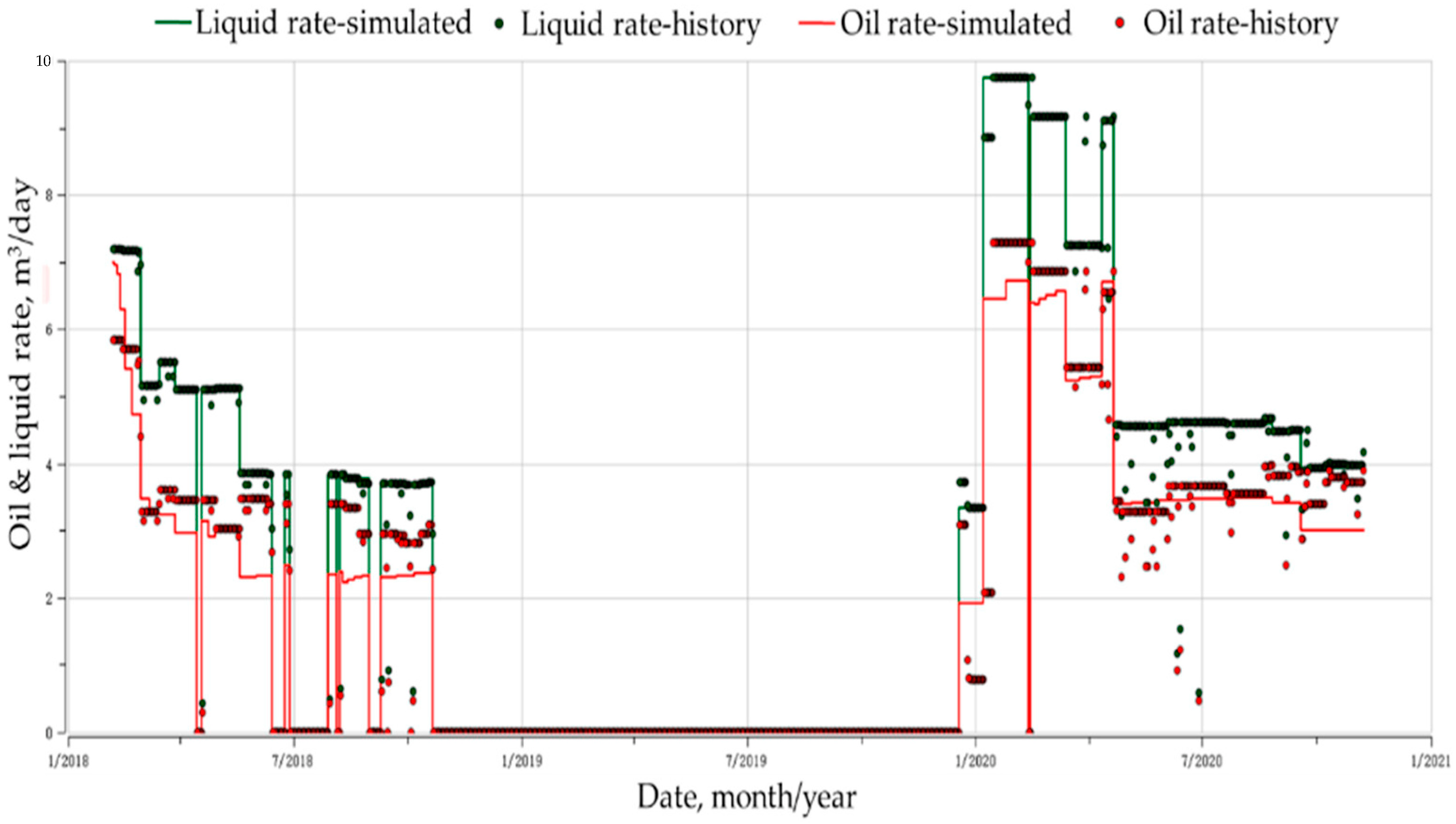
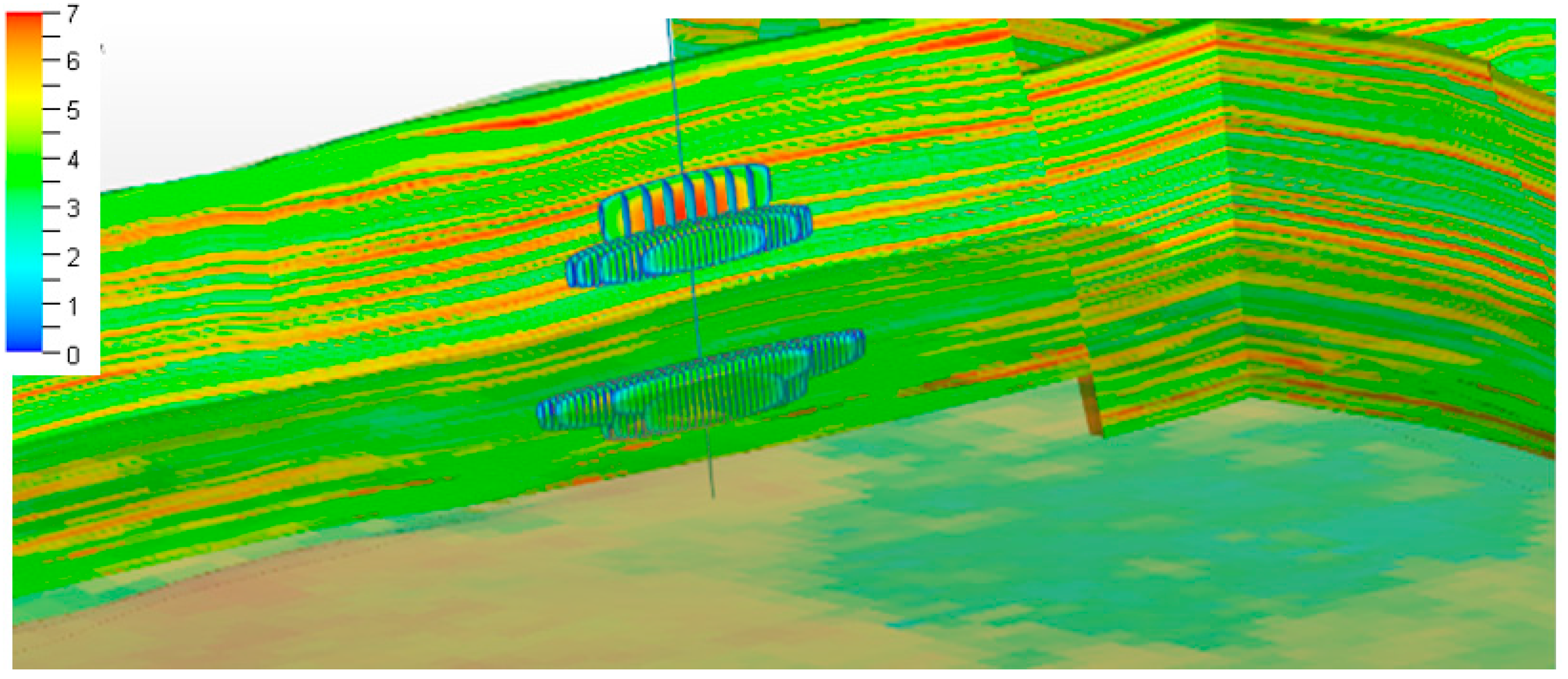

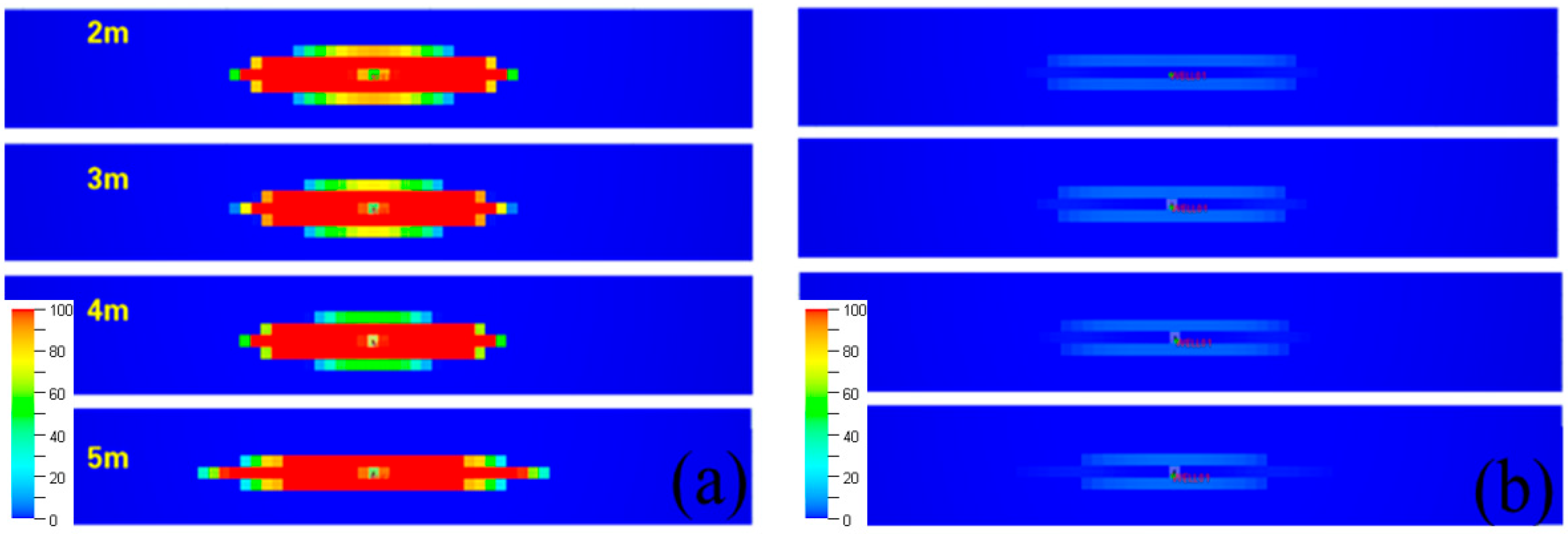

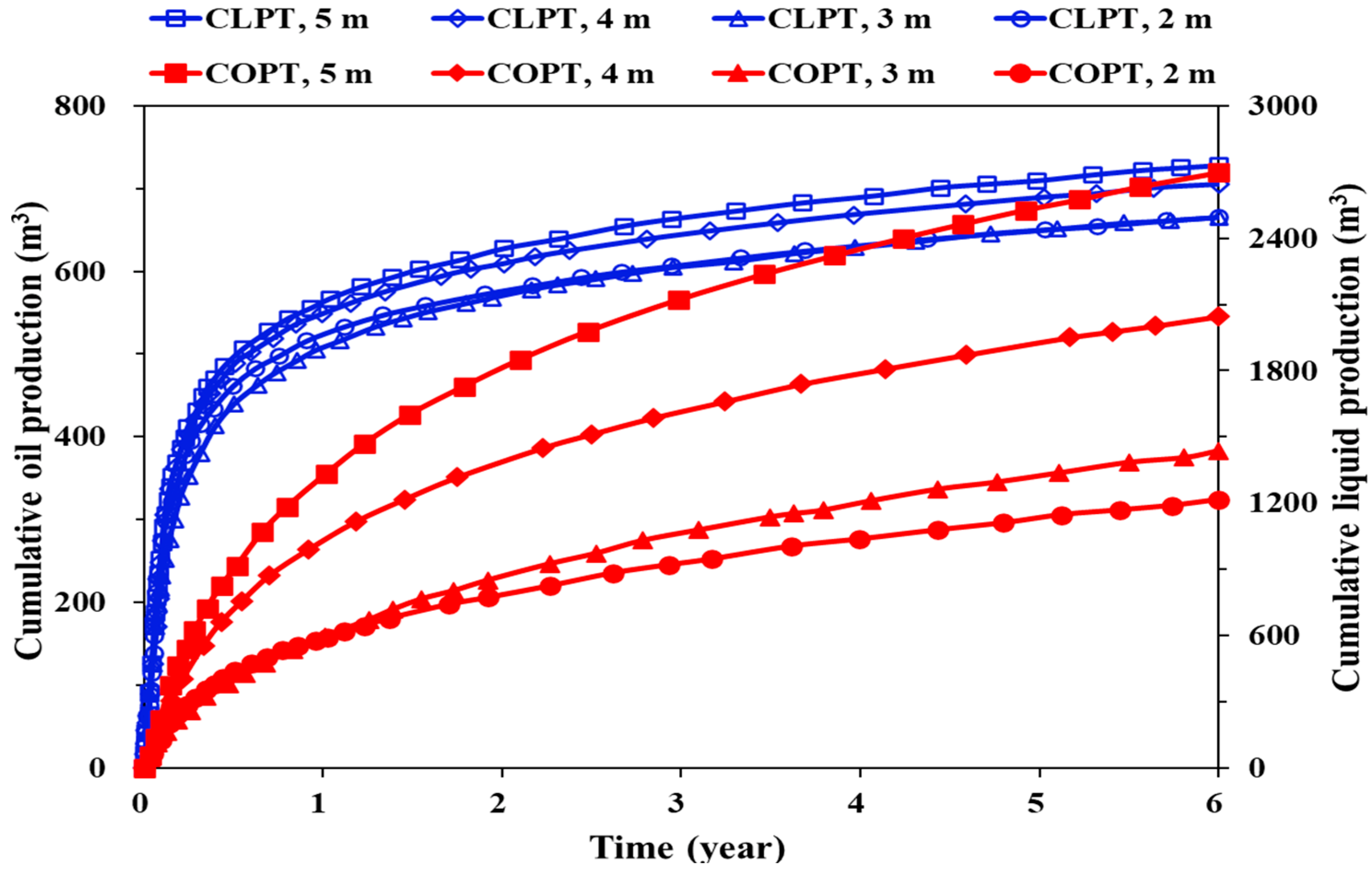

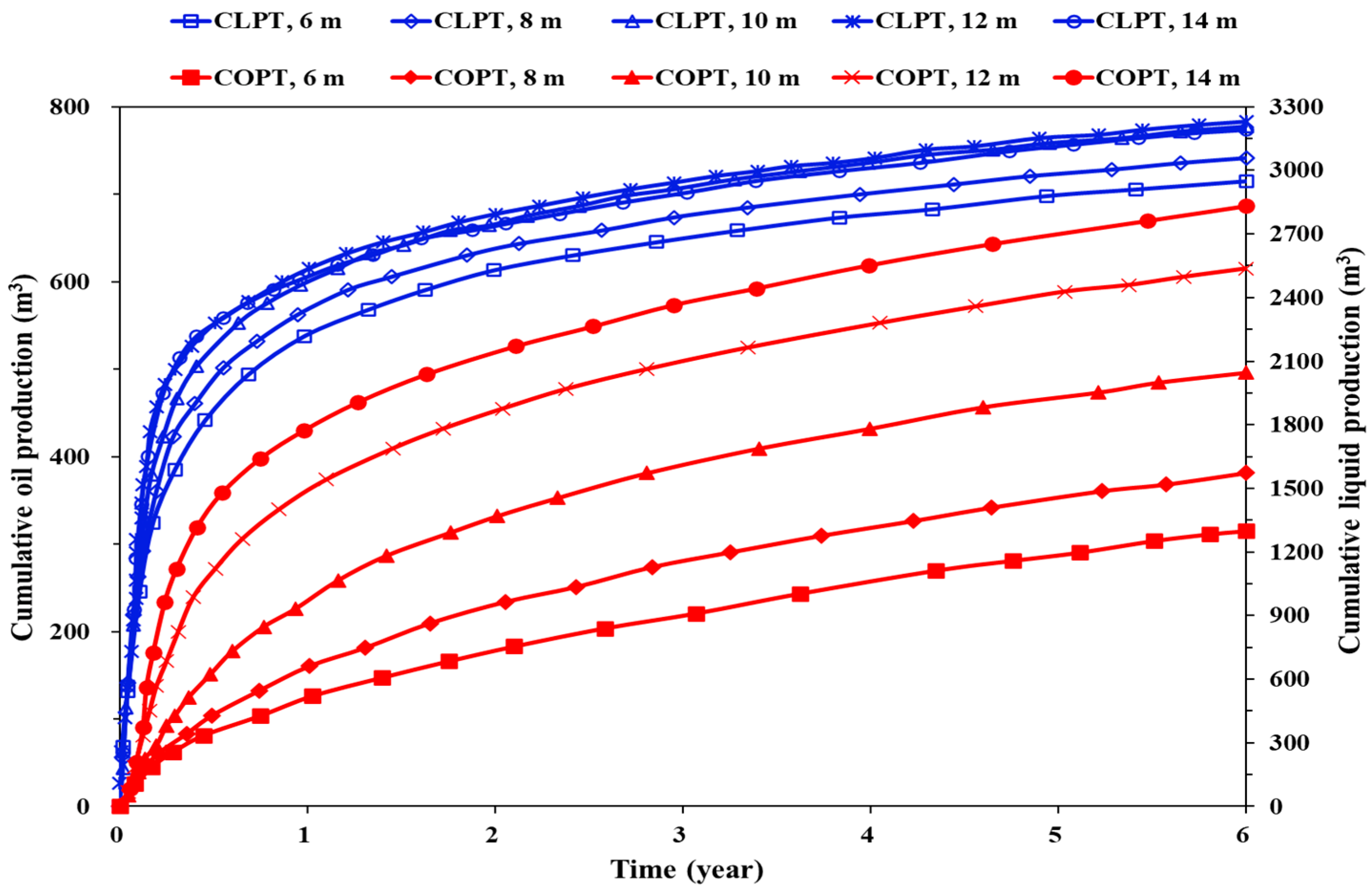
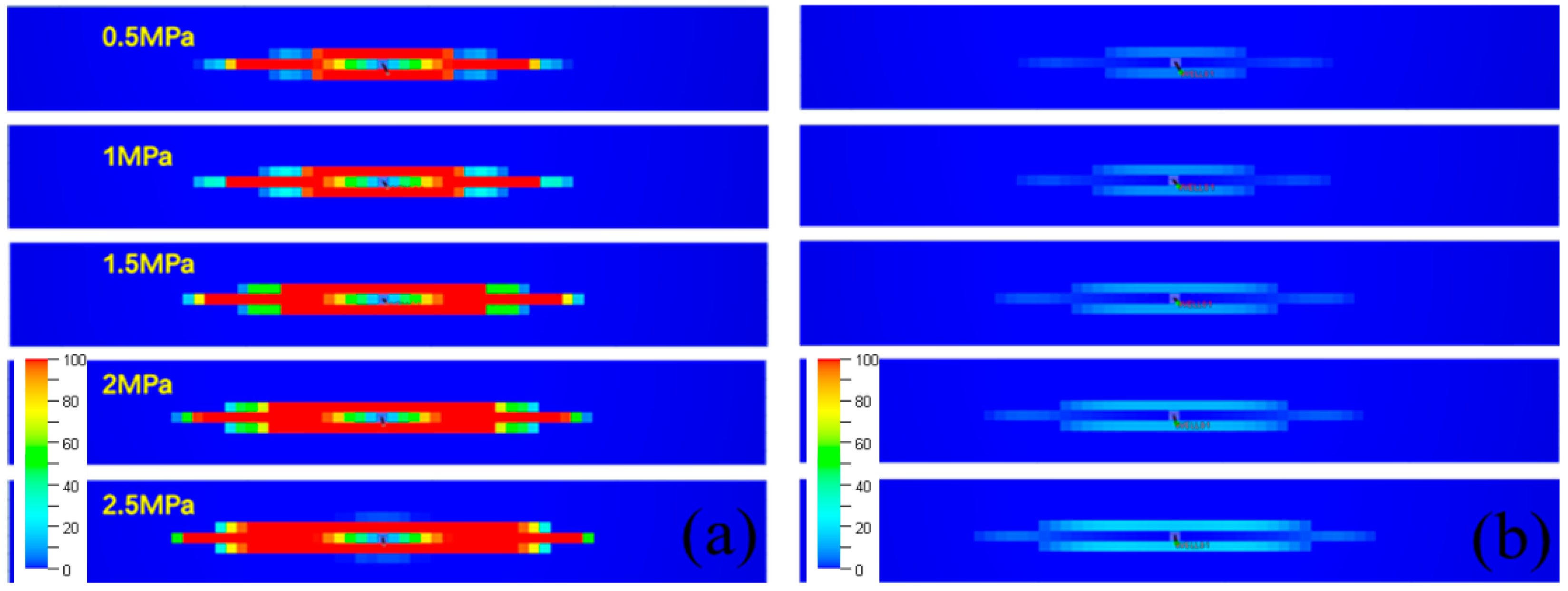
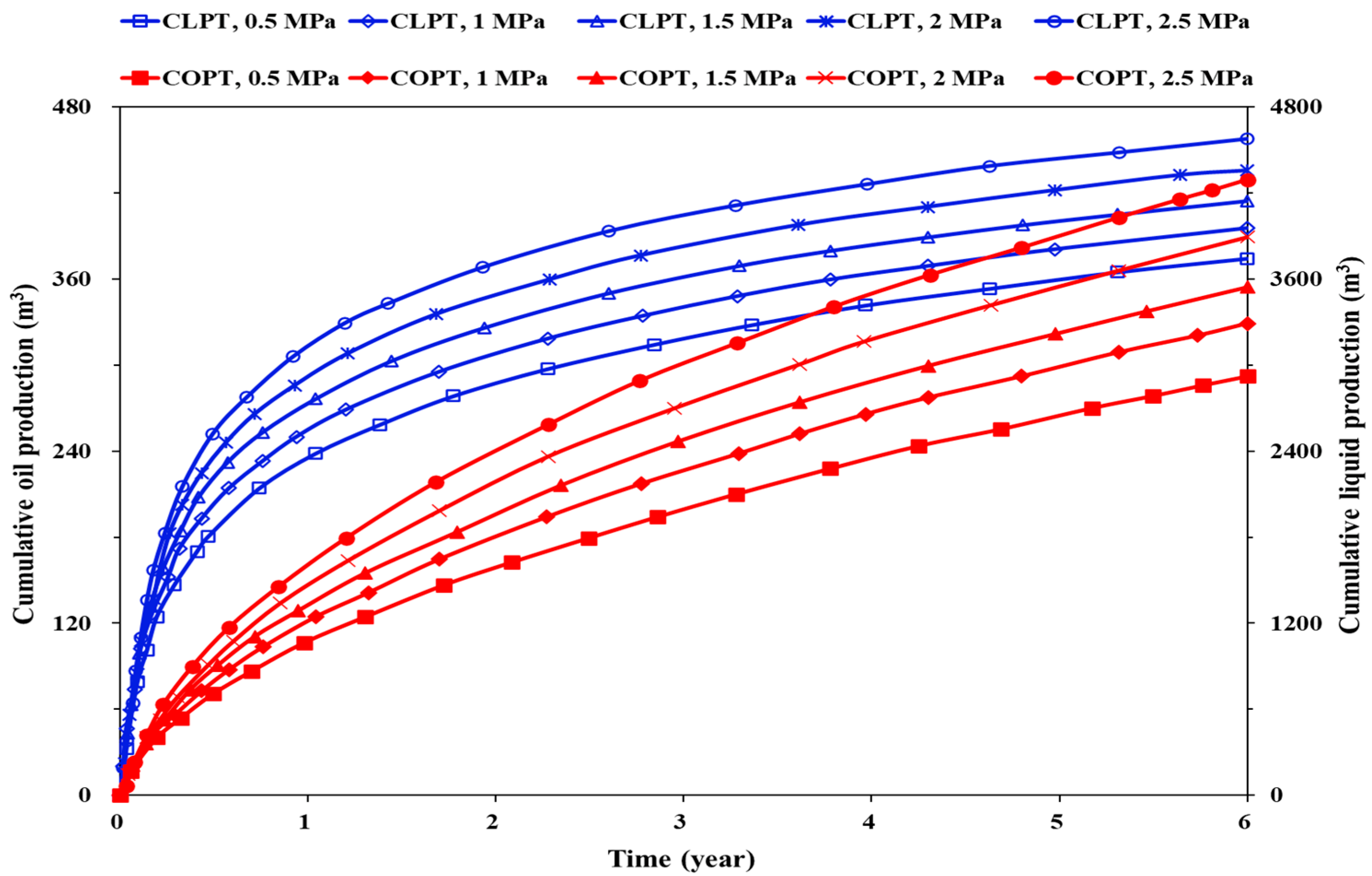

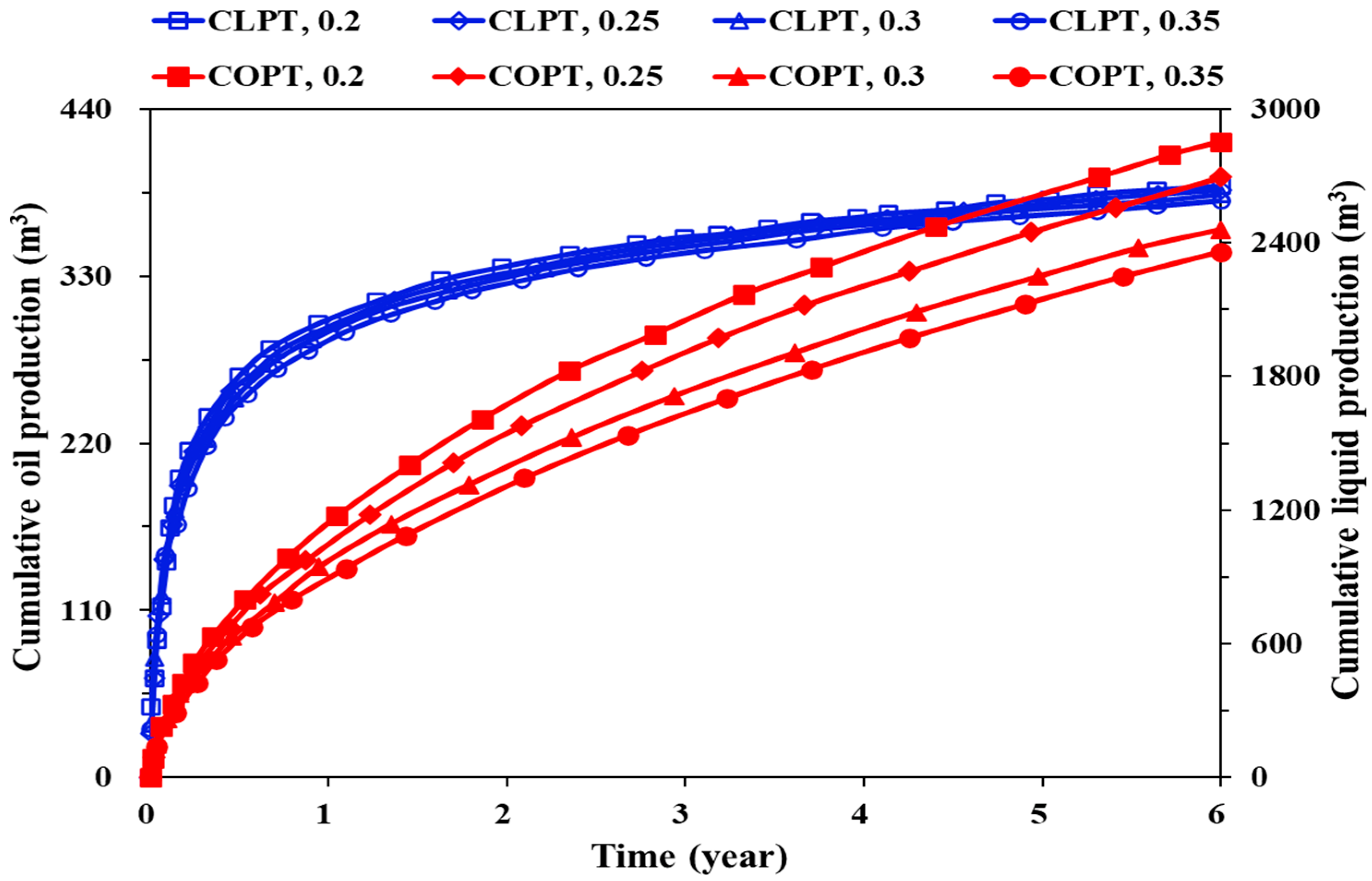



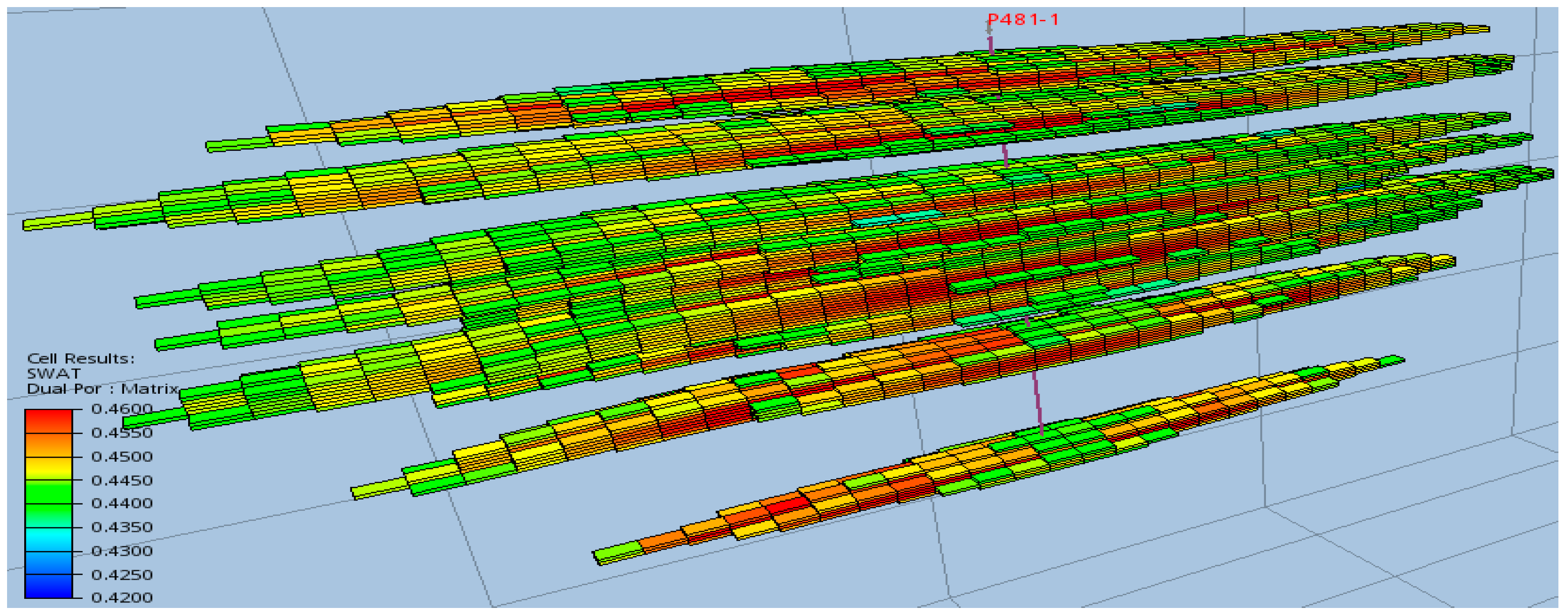

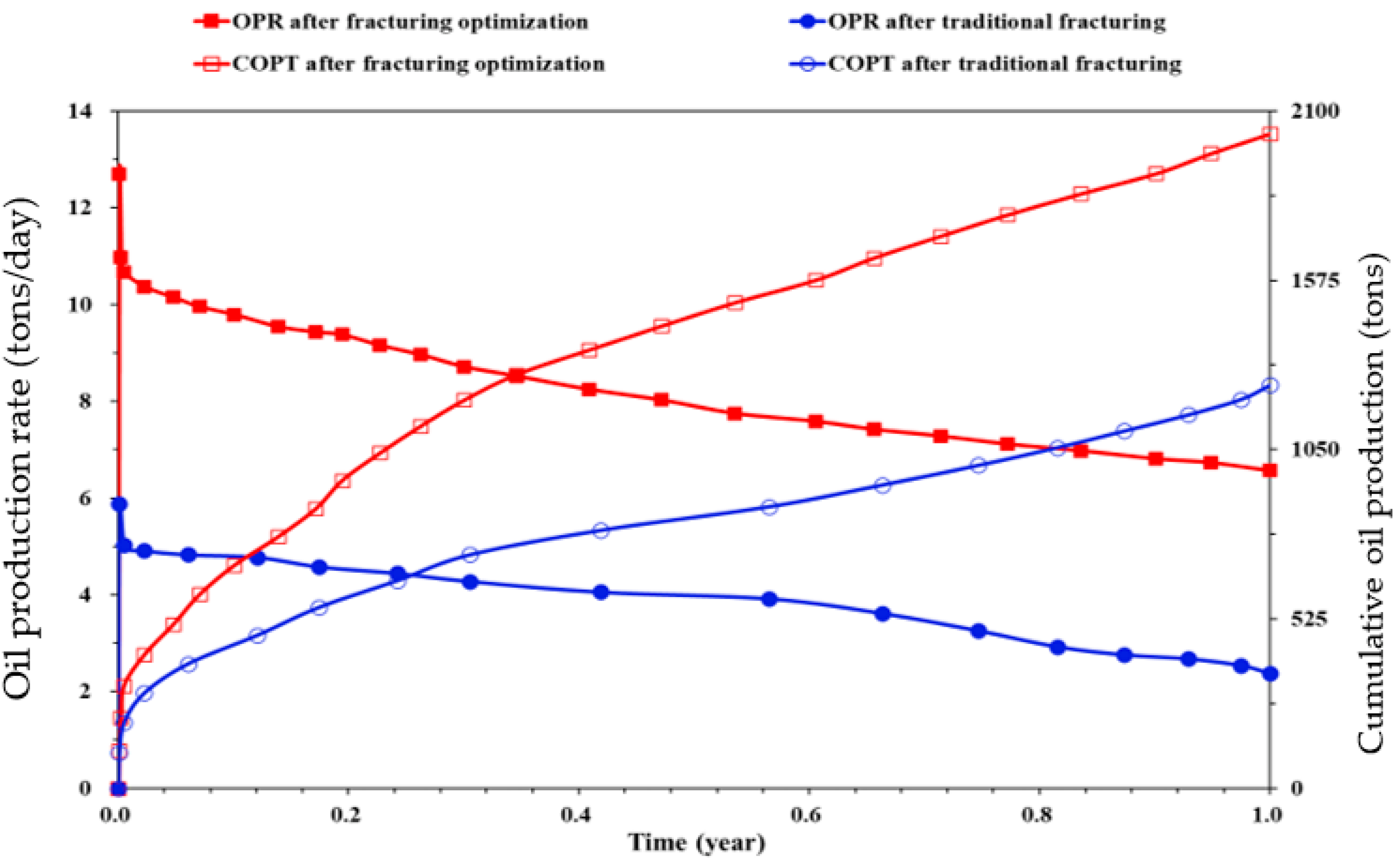
| Item | Traditional Calculation | Before History Matching | After History Matching |
|---|---|---|---|
| Minimum horizontal principal stress | 22–30 MPa | 25–32 MPa | 24.6–30.7 MPa |
| Reservoir stress difference between payzone and interlayer | 1.1–9.1 MPa | 2–10 MPa | 0.5–2.5 MPa |
| Young’s modulus | 15.6–25.1 GPa | 15–27 GPa | 16.1–29.2 GPa |
| Poisson’s ratio | 0.22–0.35 | 0.2–0.3 | 0.25–0.34 |
| Category | Item | Level 1 | Level 2 | Level 3 | Level 4 | Level 5 |
|---|---|---|---|---|---|---|
| Geological and geomechanical parameters | Payzone thickness (m) | 2 | 3 | 4 | 5 | 6 |
| Permeability (mD) | 0.2 | 0.5 | 0.8 | 1.2 | 1.5 | |
| Interlayer thickness (m) | 6 | 8 | 10 | 12 | 14 | |
| Stress difference between payzone and interlayer (MPa) | 0.5 | 1 | 1.5 | 2 | 2.5 | |
| Poisson’s ratio | 0.2 | 0.25 | 0.3 | 0.35 | / | |
| Young’s modulus (GPa) | 15 | 20 | 25 | 30 | / | |
| Fracturing parameters | Injection rate (m3/min) | 4 | 6 | 8 | 10 | 12 |
| Liquid intensity (m3/m) | 250 | 300 | 350 | 400 | 450 | |
| Sand intensity (m3/m) | 16 | 18 | 20 | 22 | 24 | |
| Fracturing spacing (m) | 5 | 10 | 15 | 20 | 25 |
| Zone No. | Slickwater m3 | Water m3 | Preflush m3 | Sand-Carrying Fluid m3 | Displacement Fluid m3 | Total Liquid m³ | 100 Mesh m3 | 40–70 Mesh m3 | 20–40 Mesh m3 | Total Sand |
|---|---|---|---|---|---|---|---|---|---|---|
| 1# | 405 | 135 | 16 | 75.7 | 7.3 | 639 | 3 | 17 | 3 | 23 |
| 2# | 1480 | 490 | 50 | 265.6 | 7.8 | 2293.4 | 9 | 69 | 5 | 83 |
| 3# | 2350 | 750 | 100 | 563.1 | 7.7 | 3770.8 | 14 | 113 | 8 | 135 |
| 4# | 1740 | 560 | 60 | 330.9 | 7.7 | 2698.6 | 11 | 84 | 5 | 100 |
| 5# | 795 | 265 | 28 | 152.2 | 7.5 | 1247.7 | 5 | 35 | 5 | 45 |
| 6# | 1125 | 375 | 36 | 199.6 | 7.4 | 1743 | 7 | 50 | 5 | 62 |
| 7# | 855 | 285 | 28 | 152 | 7.3 | 1327.3 | 5 | 38 | 5 | 48 |
Disclaimer/Publisher’s Note: The statements, opinions and data contained in all publications are solely those of the individual author(s) and contributor(s) and not of MDPI and/or the editor(s). MDPI and/or the editor(s) disclaim responsibility for any injury to people or property resulting from any ideas, methods, instructions or products referred to in the content. |
© 2022 by the authors. Licensee MDPI, Basel, Switzerland. This article is an open access article distributed under the terms and conditions of the Creative Commons Attribution (CC BY) license (https://creativecommons.org/licenses/by/4.0/).
Share and Cite
Ding, D.; Wu, Y.; Xia, X.; Li, W.; Zhang, J.; Liu, P. Method of Geomechanical Parameter Determination and Volumetric Fracturing Factor Simulation under Highly Stochastic Geologic Conditions. Energies 2023, 16, 312. https://doi.org/10.3390/en16010312
Ding D, Wu Y, Xia X, Li W, Zhang J, Liu P. Method of Geomechanical Parameter Determination and Volumetric Fracturing Factor Simulation under Highly Stochastic Geologic Conditions. Energies. 2023; 16(1):312. https://doi.org/10.3390/en16010312
Chicago/Turabian StyleDing, Dongmei, Yongbin Wu, Xueling Xia, Weina Li, Jipeng Zhang, and Pengcheng Liu. 2023. "Method of Geomechanical Parameter Determination and Volumetric Fracturing Factor Simulation under Highly Stochastic Geologic Conditions" Energies 16, no. 1: 312. https://doi.org/10.3390/en16010312
APA StyleDing, D., Wu, Y., Xia, X., Li, W., Zhang, J., & Liu, P. (2023). Method of Geomechanical Parameter Determination and Volumetric Fracturing Factor Simulation under Highly Stochastic Geologic Conditions. Energies, 16(1), 312. https://doi.org/10.3390/en16010312








